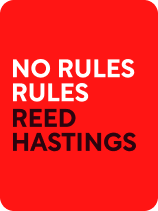

This article is an excerpt from the Shortform book guide to "No Rules Rules" by Reed Hastings. Shortform has the world's best summaries and analyses of books you should be reading.
Like this article? Sign up for a free trial here .
What is sunshining at Netflix? How does this level of transparency and candor enhance the work that Netflix produces?
Sunshining is the term used by Netflix to describe their level of transparency. All employees of access to company information, including sensitive financial data.
Keep reading for more about sunshining and how it works.
Sunshining at Netflix
Once Hastings had created a culture of candor at Netflix, he built on that transparency by making sensitive data—including profit and loss statements (P&Ls) and other financial documents—available to all employees. At Netflix, this level of transparency is called “sunshining.” While direct feedback raised individual performance and increased accountability, Hastings instituted organizational transparency to build employees’ trust in the company and its leaders, which would boost the staff’s sense of ownership and responsibility for contributing to the company’s success.
On an individual level, when you tell someone a secret, it gives the receiver an immense amount of:
- Confidence that you’re willing to share such information with them
- Loyalty to you, in return for your trust in them
- Trust in you to be honest and open
When an executive shares information that’s typically confidential with an entire company of employees, they gain confidence in their standing in the company, loyalty to the company and its leadership, and tremendous trust in the leaders to be transparent. Hastings also takes other measures to create an atmosphere of trust and openness: He doesn’t have an enclosed office, he conducts most of his meetings out in the open, and he had the locks removed from employee lockers at Netflix’s Singapore office. Hastings even sent unfinished drafts of this book to his top 700 managers.
By contrast, at most companies, only executives and high-level managers typically see sensitive financial data. Additionally, company leaders often keep secrets from staff when:
- They’re considering reorganizing the company in a way that could lead to job losses.
- They’ve fired someone for a reason that would hurt that person’s reputation.
- They have proprietary strategies and methods that they want to hide from competitors.
- They’ve made a mistake, which they fear could hurt their career if people found out.
- Managers under them are in a dispute that could lead to more discord if their teams found out.
- Certain financial information is so sensitive that an employee could go to jail for sharing it with anyone outside the company.
Despite touting the value of transparency, many executives keep this information from their staff for a variety of reasons:
- They don’t want to upset people or cause panic.
- They don’t think the information is relevant to lower-level employees.
- They want employees to stick to their strengths and focus on the work they were hired to do.
How far does Netflix take its sunshining policy? Let’s look at how Hastings chose to respond to four different scenarios and why.
Scenario 1: Share Financial Data With Staff
Dilemma: You are the founder of a startup and you’ve made a point of sharing the company’s financial and strategic information with your staff, as well as teaching them how to understand P&Ls. However, the company is about to go public, and that means that financial data will impact the organization’s stock prices. If one of your employees shares your quarterly numbers with anyone outside the company before they’ve been released publicly, that employee could go to jail. Do you continue to make this data available to your staff, or do you wait to share the quarterly numbers until after they’ve been reported to Wall Street?
Sunshining Answer: After Netflix went public, Hastings continued to share financial information with his staff while also warning them about the serious consequences of leaking it. He even began holding weekly all-staff meetings in which he gave everyone a copy of the P&L and discussed the weekly metrics, such as how many DVDs had been shipped to customers. Furthermore, on the bulletin board next to the coffee machine, Hastings posted a document full of strategic information that had to be kept secret from competing companies.
In 2014, an employee who was leaving Netflix to work at a competitor violated that trust and downloaded confidential data, which he brought to his new job. Although this created a slew of issues—including a lawsuit—Hastings didn’t back down from his commitment to transparency. Overall, he insists that this level of radical transparency benefits the company because:
- It builds trust among staff and gives them a sense of ownership.
- Employees get to see how their work is contributing to the company’s success, and thus they take more responsibility for their role.
- The deeper understanding of how the company’s doing and the direction it’s going provides employees context to make decisions without needing information or approval from managers. This helps staff act strategically and quickly.
Scenario 2: Tell Employees if Their Jobs Could Be Cut
Dilemma: Your company is considering a reorganization that could cause several project managers to lose their jobs. At this point, there is just a 50 percent chance of this happening. Do you tell the project managers now and risk creating unnecessary anxiety, or wait until their fate is certain?
Sunshining Answer: Hastings opts to be open with the project managers about the possibility that their jobs could be eliminated in six months, but emphasize that you appreciate them and their work and that you want them to stay, if possible. Hastings feels that keeping this secret could make employees feel like strangers in their own companies—and many employees appreciate being treated like adults and knowing all the information available to make informed decisions, rather than being kept in the dark and potentially blindsided later.
However, this route comes with some risks:
- The project managers could become anxious and distracted, which could interfere with their efficiency at work.
- The project managers could start looking for new jobs, which means that you risk losing them even if the reorganization doesn’t go through.
When this scenario happened to one project manager, she panicked: She had been house-hunting, but now she felt that she couldn’t commit to the new mortgage when she might lose her job in six months. Additionally, she resented her boss for worrying her about something that still wasn’t certain—and, as it turned out, she didn’t lose her job, which frustrated her even more because all of her stress was for nothing. Still, Hastings believed that transparency was the best option because the project manager would have suffered far more stress if she had lost her job without notice than she did by simply knowing that it was a possibility.

———End of Preview———
Like what you just read? Read the rest of the world's best book summary and analysis of Reed Hastings's "No Rules Rules" at Shortform .
Here's what you'll find in our full No Rules Rules summary :
- How Netflix achieved massive success in a short period of time
- The unusual business practices that have helped Netflix sustain its success
- Why Netflix fires adequate employees






